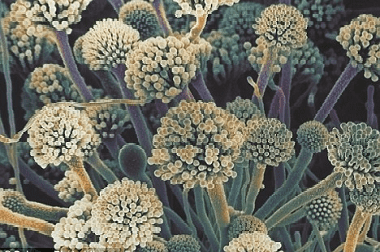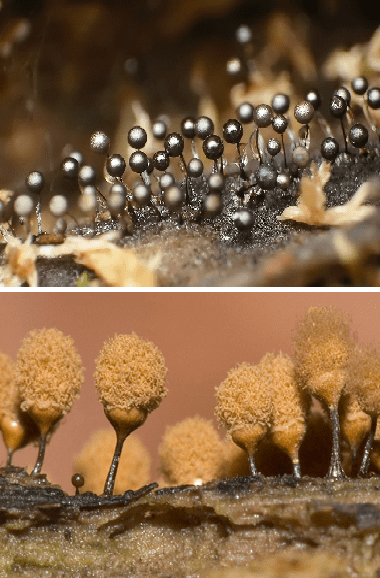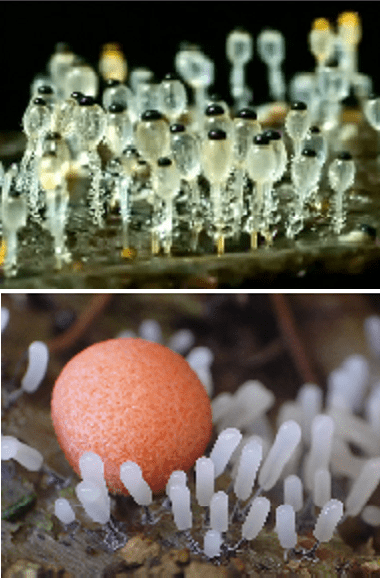Interesting >>>> Mold and methods of dealing with it
Mold and methods of dealing with it.

Mushrooms are quite common in nature. Science has collected enough information to date to classify this representative of living nature and distribute it into classes (a total of seven classes, which include lower and higher mushrooms). According to the principle of reproduction, mushrooms are divided into anamorphs (reproduce vegetatively and asexually) and teleamorphs (reproduce sexually when two nuclei merge). Most pathogenic fungi reproduce as anamorphs. The vast majority of fungi are aerobes, which allows them to grow on liquid or solid nutrient media in the presence of oxygen. During their growth, fungi form a mycelium (branched network), part of which grows into the substrate on which the fungi live their lives, and part of the mycelium is directed upward into the air masses, and is responsible for sporulation. Mycelium constantly growing in favorable conditions allows fungi to live in colonies. Young colonies are colorless, but when the period of sporulation comes, they are colored with pigment.
Representatives of the fungal world for the entire period of their existence have adapted well to various conditions of survival: some of them live life as saprophytes of plants, others as facultative microorganisms of the world of animals and humans. Many fungi cling with mycelium to surfaces that, at first glance, are not suitable for life, but if there is moisture, food debris (plant or animal), the mushrooms will "bloom" even at such a minimum of nutrition. The vital possibilities of almost all representatives of the fungal kingdom do not go beyond the temperature regime above 50 in Celsius, although there are thermophilic species among them (they live at temperatures above 50 in Celsius, for example, Paecilomyces sp.).


For many years of acquaintance with mushrooms, mankind has learned to use representatives of the mushroom kingdom for useful purposes. The presence of enzymatic activity in fungi made it possible to use their enzymes as antibacterial drugs in medicine, in the form of ferments and other chemical ingredients in the food industry. But there is still a danger of encountering fungi, whose enzymes are highly toxic and capable of destroying not only various kinds of material (corroding metal, corroding wood and concrete), but also causing a number of severe intoxications of the body of animals and humans, often leading to death.
Coccidioidosis, histoplasmosis, cryptococcosis, blastomycosis, aspergillosis - this is not a complete list of serious diseases, any of which can cost a person his life. But the question arises: "How to prevent this kind of disease, if the fungi are small enough and not recognizable by an ordinary person who does not have microbiological knowledge?"
In order to understand that this is a representative of the mushroom world, you do not need to be a microbiologist. Very often, in everyday life, a person encounters representatives of the mushroom kingdom and even gave them the name "mold".
Mold (or a colony of mold fungi ) is so tenacious that one has only to forget about any food product for a week, and it already becomes its habitat. No amount of preservatives, acidic or salty environments can prevent it from growing. The main thing is that there is moisture and not too high a temperature. Low temperatures are not detrimental to fungi, but only slow down the vegetation processes. But as soon as the temperature regime becomes favorable, the colony of fungi (mold) will continue its life cycle.
Favorite habitats of mold are not only food, but also walls, ceilings of rooms with a high level of humidity, as well as any quality of construction and objects located in such rooms. Mold clings to all surfaces, even perfectly smooth surfaces such as glass, polished wood, plastic, and so on.
To recognize mold by its appearance , you do not need to have special scientific knowledge: it looks like a fluff with different shades: white, beige, blue, green, yellow, pink, brown, gray, black. But to determine whether mold is dangerous or not, it will not work without laboratory tests. Therefore, in order to avoid infection with fungal diseases, it is worth considering any mold as potentially hazardous to health and fighting its existence.


How to deal with mold ?
Mold does not tolerate dry air, does not grow and does not undergo a sporulation cycle in the absence of moisture, is unstable to some chemicals (bleach, copper sulphate, creosote). In connection with the listed properties of mold, in order to combat it, it is necessary to insulate and waterproof the premises, thoroughly ventilate and dry the premises intended for water procedures, carry out preliminary disinfection of premises that are at risk of mold infestation. The whole trouble with the spread of mold is its tendency to sporulation. A room with mold already located in its corners is simply pointless to ventilate: the air flow will spread spores rather than dry out the corners with mold. Even dried (dehydrated) mold will allow spores to scatter. For this reason the fight against mold begins with the treatment of its colonies with disinfectants (in several stages), and only after that the layer of affected plaster, or wallpaper, or other materials on which the mold is located, is removed and the room is ventilated. It is worth remembering that by washing off the mold with water, you can spread its spores to neighboring surfaces. Therefore, brushes, sponges, rags or other materials and tools that used to clean off the mold are either not used twice, or they are also thoroughly disinfected.

Read

Read



























